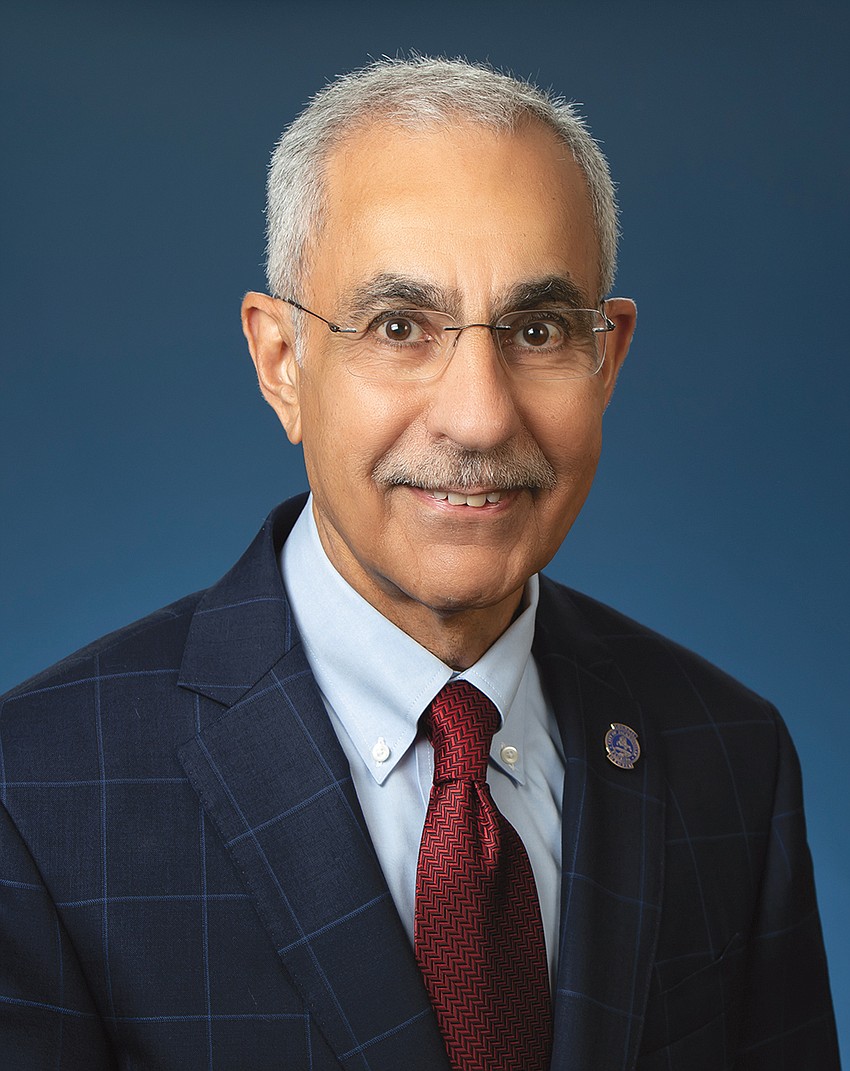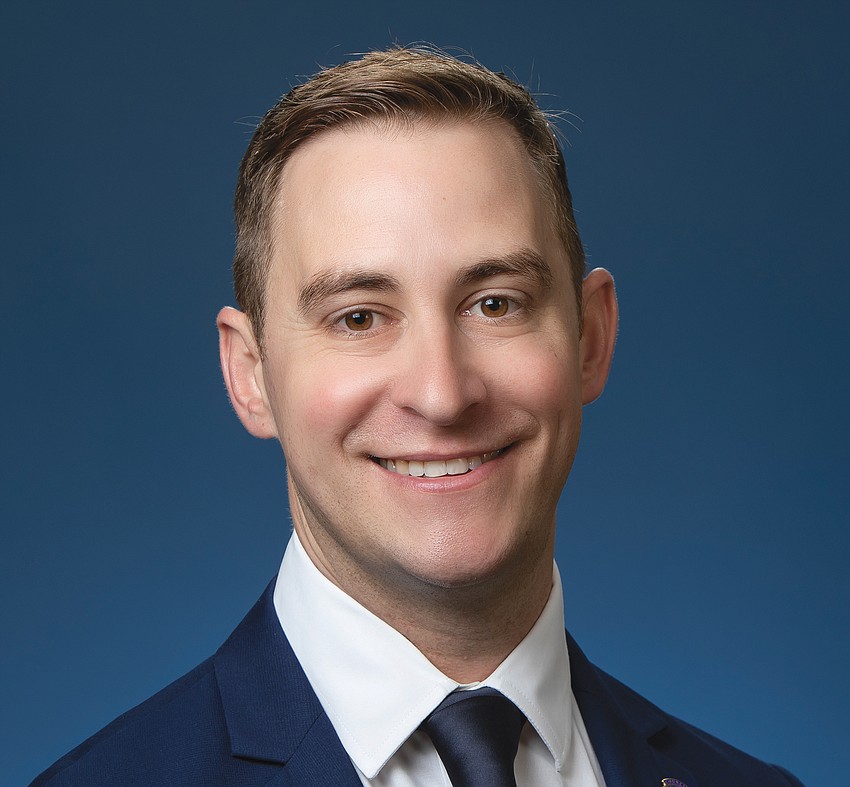
Go ahead, challenge Ron Salem to prove he can name starters for his favorite baseball team, the Atlanta Braves, from decades ago.
“Third base back in the late ’60s was Clete Boyer, shortstop was Sonny Jackson, Felix Millan was at second, Orlando Cepeda at first, right field was my hero, Hank Aaron, left field was Rico Carty, Joe Torre was the catcher and centerfield, I think, was a guy named Jones,” Salem said during an interview. “Do you believe me now?”
Salem has been a Braves fan since 1966, when the team moved from Milwaukee to Atlanta and he began listening to their games regularly on the radio. Back then, the Jacksonville native was a 10-year-old whose mom would chide him to switch off the nightly broadcasts and go to sleep.

Now he’s an at-large member and president of the Jacksonville City Council and his enduring love of baseball and Aaron can be seen in a project he has championed to renovate and modernize J.P. Small Memorial Park at 1701 Myrtle Ave. N. in Durkeeville.
The $9.7 million project will replace the playing surface with artificial turf that will cover the entire field, including the basepaths and batter’s boxes. The turf, combined with drainage tubes installed beneath it, will allow the surface to dry out quickly and reduce rainouts.

Professional-grade lighting has been installed and plans call for a baseball museum at the park to be moved from the grandstand to a free-standing building near the left-field corner, which will also house an African American baseball museum. In addition, the dugouts and locker rooms will be renovated.
Salem said the seeds of the project were planted when representatives from the design and architecture firm HOK came to Jacksonville for a project related to EverBank Stadium.
“I got them to come over here, and they went bananas,” he said. “They said, ‘You’ve got a jewel here.’ So they helped us put the plans together that we’re implementing now.”
For people who appreciate baseball history, the field is a diamond in more than the literal sense. Babe Ruth and Lou Gehrig played at the stadium when it was a spring training site in the early 1900s. Aaron played there in 1953 when it was called Durkee Field and the future baseball home run king, along with Black teammates Horace Garner and Felix Mantilla, integrated the South Atlantic League.

The stadium also was home to the Jacksonville Red Caps of the Negro Leagues, the organization for Black players that thrived before the racial integration of Major League Baseball. Negro League legends who played at J.P. Small include Leroy “Satchel” Paige and James “Cool Papa” Bell.
Salem said J.P. Small is one of two or three parks left in the U.S. with ties to the Negro Leagues.
“It’s historic, and it was almost torn down,” he said.
The stadium’s brush with the wrecking ball happened in the early 1980s, when it was targeted as part of an urban renewal project. Salem said former Mayor Jake Godbold and Council member Denise Lee stepped in to save the structure, with Lee later telling Salem she was prepared to lay in front of a bulldozer to keep the stadium from being demolished.
The park dates to 1912 and was purchased by the city in 1932.
The stadium is named for James P. Small, Stanton High’s baseball coach from 1934 to 1969. Under legislation introduced by Salem and approved in 2021, the field is named for Aaron.

One of Aaron’s sons, Lary, called into the Council meeting in which the legislation was passed, a phone call arranged by former Council member Reggie Gaffney Sr. Gaffney had played with Lary Aaron at Florida A&M University.
“It was unbelievable,” Salem said. “This is Hank Aaron’s son calling into the City Council meeting, and everybody was just astonished that Reggie could pull that off. But that’s Reggie.”
Salem said the upgraded park would remain the home of the Edward Waters University baseball team.

High school games will be played there, he said, and the Jacksonville Jumbo Shrimp have committed to playing at least one game per season at J.P. Small with the Shrimp wearing throwback Red Caps uniforms.
Salem’s most ambitious vision for the park is that Major League Baseball would choose it as the site of an annual game honoring the Negro Leagues, similar to MLB’s annual Field of Dreams throwback game in Iowa.
That game is played at an 8,000-seat ballpark built at the location of the culminating scene of the 1989 baseball-themed movie starring Kevin Costner and James Earl Jones.
“I think we need to treat our history much more reverently than we have, and that’s what I’m trying to do with this,” Salem said. “And I think it falls into place what we’re trying to do in Durkeeville as a whole because I think this is the middle of Durkeeville.”

Historic preservation isn’t Salem’s only goal. He says the project is part of a broader effort to spur development in Durkeeville, one of the oldest predominantly Black communities in Jacksonville.

Salem and Council member Jimmy Peluso introduced legislation providing $200,000 for a community engagement and visioning study to develop a strategic plan for revitalization and redevelopment in Durkeeville.
The money will go to Jacksonville-based Community Planning Collaborative LLC, which will conduct the study.
According to city documents related to the legislation, Ordinance 2024-0253, the study will include “taking an assessment of existing conditions throughout the area, followed by an analysis of how to revitalize and appropriately develop the area to meet the needs of the community while engaging community stakeholders and residents in a community-led strategic planning initiative.”
In addition to gathering input from the community, the study will provide a plan for development of vacant lots owned by the Jacksonville Housing Authority in Durkeeville and will examine community needs such as a grocery store.
Community Planning Collaborative’s website lists the organization’s principals as Adrienne Burke and Ennis Davis, a member of the Downtown Development Review Board.

Council approved the study April 23.
As for J.P. Small, Salem said turf is expected to arrive soon.
For now, the field is a construction zone with heavy equipment and hundreds of yards of drainage tubing stacked on the bare dirt. Signs of work yet to be done are visible around the field, such as softball-size holes and chipped paint on the walls of the first-base dugout.
But where neglect had once set in, renovation is well underway.
As Salem looked over the field on a recent afternoon and pointed out the improvements that are in progress, he had a smile that could be imagined as being on the face of a 10-year-old listening to Aaron mash a homer and hoping his mom wouldn’t make him go to bed anytime soon.
“As I tell people, if they can play a game in the middle of Iowa, they can play one here,” he said. “Can you imagine blocking off these roads and having all these people come to a Major League Baseball game in the middle of this neighborhood?”